#nepal army
Explore tagged Tumblr posts
Text
There are about 35,000 Nepali Gurkhas currently serving in the Indian army, including in the geopolitically sensitive region of Indian-administered Kashmir and the northeastern parts of the country. The Gurkhas have a strong bond with the Indian military, and Gurkha regiments have become part of the culture of the Nepali hill communities. There are about 120,000 Indian Gurkha veterans living in Nepal. Their pension and other benefits have contributed to the economy of the impoverished hill regions.
Anbarasan Ethirajan, ‘Agnipath scheme: The pain of Nepal's Gurkhas over Indian army's new hiring plan’, BBC
#BBC#Anbarasan Ethirajan#Nepali Gurkhas#Indian army#Indian-administered Kashmir#Gurkhas#Gurkha regiments#Nepali hill communities#Indian Gurkha veterans#Nepal
5 notes
·
View notes
Text
नेपाल की पांच दिवसीय यात्रा से वापस लौटे भारतीय सेना प्रमुख, गोरखा भर्ती पर साधी चुप्पी; जानें क्या है बड़ा कारण
Delhi News: भारतीय सेना प्रमुख जनरल उपेंद्र द्विवेदी नेपाल की पांच दिन की आधिकारिक यात्रा पूरी कर रविवार का स्वदेश लौट आए। इस दौरे का उद्देश्य भारत और नेपाल के बीच द्विपक्षीय रक्षा सहयोग और सांस्कृतिक संबंधों को मजबूत करना था। हालांकि, पिछले चार साल से रुकी हुई गोरखा सैनिकों की भर्ती को फिर से शुरू करने पर कोई स्पष्टता नहीं आई है। सेना की ओर से जारी आधिकारिक बयान में कहा गया, “यह दौरा तय लक्ष्यों…
0 notes
Text
PATCHLife - A military wife perspective
Yesterday, it was a privilege to be interviewed for this #podcast about being a #militaryspouse. Sacrifices are made as an #Armywife, particularly saying goodbye to friends, but I'm thankful God has used me in the places he's taken me to.
Yesterday, it was a privilege to be interviewed for this podcast about being a military spouse. I am so grateful to God for leading me to become an Army wife. It has allowed me to travel, meet so many incredible people, and set up the charity Women Without Roofs—Nepal, which has been life-changing for me. It was fun chatting with Boo, the shows’s creator and host, and we bonded over our…
0 notes
Text
Nepal Army Written Exam Program 2081 for Sainya Post
Nepal Army Written Exam Program 2081 for Sainya Post — According to the previously published advertisement of the Nepali Army, the schedule for the written examination for the post of Sainya (open and inclusive competition) has been determined. This notice is published for the information of all concerned. Agency: Nepali Army Advertisement Publication Date: 2081/01/07 Program Publication…
0 notes
Text
Big action by Nepal Police, case of trafficking of fighters of Nepalese Gorkha community to Russian Army for war exposed
NEPAL: Kathmandu Police has arrested a big gang. This gang was forcing people to be sent to Russia so that they could fight with the Russian army in the Ukraine war. Police gave this information on Wednesday. He said that the gang used to charge Rs 7 lakh to Rs 11 lakh from each person for arranging ‘visit’ visa and other documents for recruitment in the Russian Army. The step was taken after…

View On WordPress
#war#Breaking News#breaking news app#breaking news headlines#Exclusive News#Gorkha community#International Breaking News#Nepal Police#Russian Army#Trafficking of fighters#Ukraine war#Ukrainian army
0 notes
Text

Ghode Jatra is known as the festival of horses in Nepal celebrated during March. Tundikhel ground in central Kathmandu hosts the festival every year with the head of the nation being invited along with other government officials and the general public watching the show from around the fence.
[src.: https://www.iciclesadventuretreks.com/blog/ghode-jatra-festival-of-horses-in-nepal]
#gemsartsjewellery#festival#ghodejatra#horses#army#government#local#ground#Lazimpat#kathmandu#kathmanduvalley#nepal#diamonds#gold#silver#gemstonesforsale#lazimpat#gems#jewellery
1 note
·
View note
Photo

Nepal Plane Crash: Search for four people missing in the plane crash started, Army said – we have not found anyone alive yet #new #update #latest_news #Nepal #Plane #crash #newspaper #Army #alive #news
0 notes
Text


34-38 Krukenberg operations performed in Nepal, 2001 – 2007 During armed conflict in which civilian population have been victims, mine blasts are a major cause of severe injuries involving multiple systems, bilateral crush injuries of the extremities and severe soft-tissue lacerations. Herman Krukenberg, a German army Surgeon, developed the Krukenberg procedure in 1917.³,⁴ In this operation the two forearm bones are separated creating a pincer tike grasp that gives the patient good pinch, grip with useful sensibility.
243 notes
·
View notes
Text
Mt. Everest is plagued by garbage. These Nepali women are transforming it into crafts
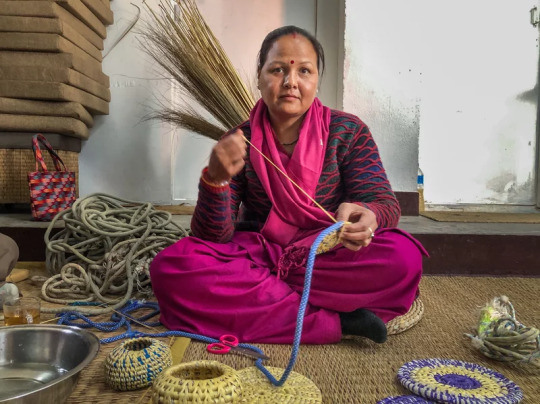
KATHMANDU, Nepal — Sunita Kumari Chaudhary quietly weaves together lengths of rope, binding them with grass collected from the riverbank in her village of Dang. She skillfully shapes the materials into a jewelry box. As she weaves, she's instructing a small group of women how to work with the materials.
The ropes that Chaudhary and the others are using were once the lifeline for mountain climbers tackling Nepal's mountains and were then tossed. Government initiatives to clean up discarded materials on the mountains have ramped up since 2019. The waste, including the ropes, is now finding new life, transformed by skilled hands like Chaudhary's into items to sell such as boxes and table mats.
"At first, I wasn't aware that these ropes were collected from the mountains," Chaudhary says as she expertly bends and coils a blue-colored rope into an oval-shaped box. To her left, a container holds her tools – scissors and metal nails. Scattered on the floor are several mats she'd made, each a vibrant mix of golden yellow, purple and blue.
"Later, I learned that [the ropes were] collected during a mountain cleaning campaign. And people like me, who are far from the mountains but belong to the indigenous Tharu community, are using our traditional skills to transform this waste into something entirely new."
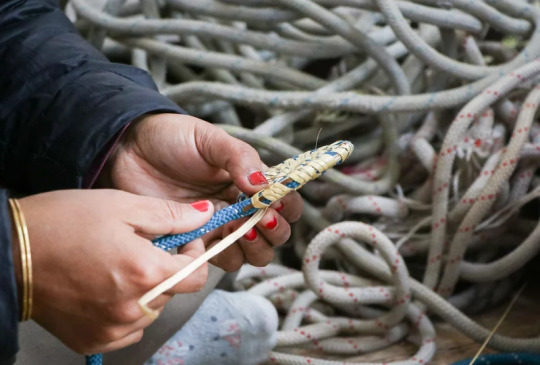
The Himalayan mountains are increasingly laden with mounting waste left by mountaineering activities over the years. There is no official data, but Nepal's Department of Tourism estimates that on Mt. Everest alone, there is nearly 140,000 tons of waste.
In 2019, the government launched an initiative led by the Nepal Army to clean up the mountains. Waste collected from the "Safa Himal Aviyan" (Clean Mountain Campaign) is either securely dumped if it's biodegradable or reused/recycled if it's not biodegradable.
Now some of that material is finding its way to Indigenous craftswomen like Chaudhary, thanks to an initiative led by Shilshila Acharya.
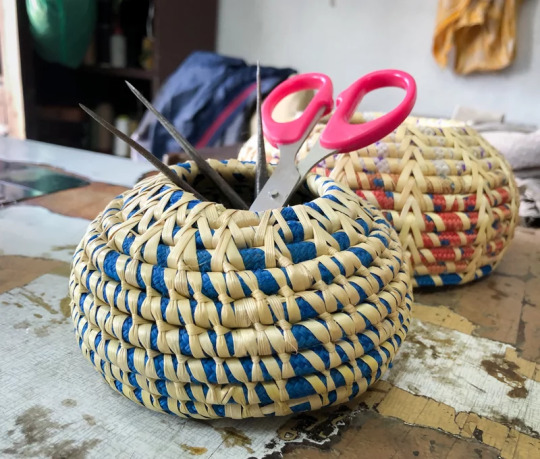
170 notes
·
View notes
Text
Daily update post:
Navigation apps in Israel were instructed not to sure traffic jams anymore, so Hamas and Hezbollah terrorists won't be able to aim rockets at them.
The Minister of Defense made it clear that every benefit, support and compensation for the bereaved families of the Oct 7 massacre will apply to same-sex families, too.
Among Hamas' victims in the massacre are 235 people with non-Israeli nationality, an additional 74 are categorized as missing (meaning it's still unknown if they've been murdered or kidnapped), and they come from 41 countries. This includes at least 30 people murdered from Thailand, 10 from Nepal and 6 from China, at least some of them were beheaded.
Please explain to me how does beheading a student from Nepal help liberate any Palestinian, or why were non-Israelis butchered if the massacre was supposedly "resistance" against Israel?
The Israeli president revealed that among the documents recovered from Hamas terrorists were instructions from Al-Qaeda on how to build a weapon with cyanide.
This demonstrates how Hamas has been learning from other extremist Islamist organizations. They also adopted ISIS' use of the drug captagon to prevent a sense of fear in the terrorists, heighten their feelings of rage, as well as keep them going for longer. All of this (together with multiple reports that Hamas brought weapons for far more than just one day of slaughter) indicates that, while the massacre is the worst to have happened in the history of the Israeli-Arab conflict, what Hamas had in mind was probably even worse.
Israel screened today for foreign journalists 40 minutes of raw footage showing the massacre, most of it from Hamas terrorists' body cameras. Here is the full thread of one journalist, about some of the horrors seen in it. I'll share just one part of the thread, because I think #8 is really important:

The Israeli army has been releasing aerial photos showing how Hamas intentionally places its rocket launching sites next to civilians, so that either Israel is deterred from firing at these, to stop the rocket launching at civilians in Israel, or so that civilian Gazans will be harmed when Israel does act against these targets. For context, the Gaza strip DOES have uninhabited parts, where rocket launching would not endanger any civilians at all.
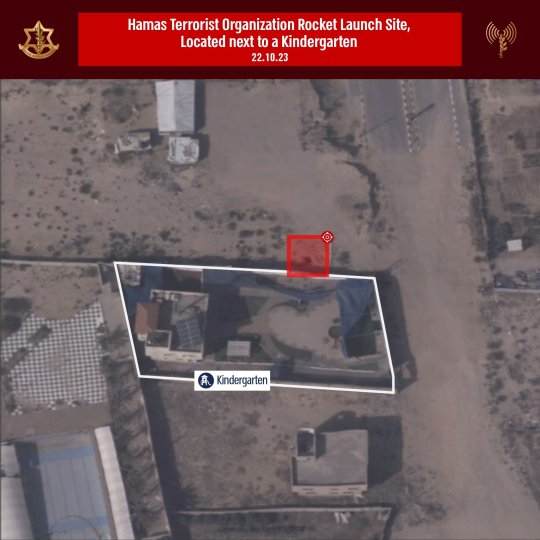
Today, Hamas has sent two attack drones and Hezbollah has sent one. The latter was flown and attacked from the direction of the sea.
An Israeli lawyers NGO has filed at the Hague to put Hamas and the Palestinian Islamic Jihad on trial for crimes against humanity.
Another personal story, this time of Atallah, a little Arab Bedouin boy whose father was told that, for being Israeli Arabs, they're more Jewish than Jews (and therefore legitimate targets to Hamas):

(for all of my updates and ask replies regarding Israel, click here)
#israel#israeli#israel news#israel under attack#israel under fire#israelunderattack#terrorism#anti terrorism#antisemitism#hamas#antisemitic#antisemites#jews#jew#judaism#jumblr#frumblr#jewish
191 notes
·
View notes
Photo

Anglo-Nepalese War
The Anglo-Nepalese War (aka Gurkha War, 1814-16) saw the British East India Company (EIC) lose several battles against Nepalese Gurkhas before finally securing victory in a hard-fought campaign that, for the first time, extended EIC control beyond the borders of India. Impressed with the Gurkhas' fighting abilities, the British have enrolled them in their armies ever since.
East India Company Expansion
The East India Company was founded in 1600, and by the mid-18th century, it was benefiting from its trade monopoly in India to make its shareholders immensely rich. The Company was effectively the colonial arm of the British government in India, but it protected its interests using its own private army and hired troops from the regular British army. By the 1750s, the Company was keen to expand its trade network and begin a more active territorial control in the subcontinent.
Robert Clive (1725-1774) won a famous victory for the EIC against the ruler of Bengal, Nawab Siraj ud-Daulah (b. 1733) at the Battle of Plassey in June 1757. The Nawab was replaced by a puppet ruler, the state's massive treasury was confiscated, and the systematic exploitation of Bengal's resources and people began. The EIC won another key contest in October 1764 with victory at the Battle of Buxar (aka Bhaksar) against the Mughal emperor Shah Alam II (r. 1760-1806). The emperor then awarded the EIC the right to collect land revenue (dewani) in Bengal, Bihar, and Orissa. This was a major development and ensured the Company now had vast resources to expand and protect its traders, bases, armies, and ships.
The EIC kept on expanding through diplomacy and military conquest. Victories came against the southern kingdom of Mysore across the three Anglo-Mysore Wars (1767-1799). Intertwined with these conflicts were the three Anglo-Maratha Wars (1775-1819) against the Maratha Confederacy of Hindu princes in central and northern India. Once again the EIC came out as the winner. The Company had extended its control of the subcontinent not only through direct territorial possessions but also through a policy of Subsidiary Alliances, where rulers of the Indian princely states were obliged to have an EIC resident at their court, host and pay for an EIC garrison, and hand over the direction of foreign policy to the British. With large parts of India now in its grasp, the ever-avaricious East India Company and its new Governor-General the Marquess of Hastings (in office 1813-23) began to look to the far north for further opportunities for profit. Consequently, the next EIC target was Nepal, and it declared war on the kingdom in April 1814.
Continue reading...
24 notes
·
View notes
Text

translated by google :
Comrade Tsutomu Shirosaki, one of the Red Army comrades who fought alongside PLFP the front, died two days ago in prison after a lifetime of struggle.
Japan is still arresting many comrades because of their affiliation to the resistance and Palestine.
Comrade Fusako Shigenbu, for example, the first thing she did after she got out of her prison - after 21 years - wore Palestinian scarf
Tsutomu Shirosaki (城崎勉)
PFLP fighter. Born in 1947. Joined the Red Army Faction in 1970. Carried out Operation M and was arrested in 1971. Although he was released after the Dhaka incident, he joined the PFLP instead of the Japanese Red Army. In 1986, he caused the Jakarta incident as part of the Anti-Imperialist Brigade. He was arrested in Nepal in 1996.
38 notes
·
View notes
Text
The Nepalese army says it has removed eleven tonnes of rubbish, four corpses and one skeleton from Mount Everest and two other Himalayan peaks this year.
It took troops 55 days to recover the rubbish and bodies from Everest, Nuptse and Lhotse mountains.
It is estimated that more than fifty tonnes of waste and more than 200 bodies cover Everest.
The army began conducting an annual clean-up of the mountain, which is often described as the world’s highest garbage dump, in 2019 during concerns about overcrowding and climbers queueing in dangerous conditions to reach the summit.
The five clean-ups have collected 119 tonnes of rubbish, 14 human corpses and some skeletons, the army says.
This year, authorities aimed to reduce rubbish and improve rescues by making climbers wear tracking devices and bring back their own poo.
In the future, the government plans to create a mountain rangers team to monitor rubbish and put more money toward its collection, Nepal's Department of Tourism director of mountaineering Rakesh Gurung told the BBC.
For the spring climbing season that ended in May, the government issued permits to 421 climbers, down from a record-breaking 478 last year. Those numbers do not include Nepalese guides. In total, an estimated 600 people climbed the mountain this year.
This year, eight climbers died or went missing, compared to 19 last year.
A Brit, Daniel Paterson, and his Nepalese guide, Pastenji Sherpa, are among those missing after being hit by falling ice on 21 May.
Mr Paterson’s family started a fundraiser to hire a search team to find them, but said in an update on 4 June that recovery “is not possible at this time” because of the location and danger of the operation.
Mr Gurung said the number of permits was lower this year because of the global economic situation, China also issuing permits and the national election in India which reduced the number of climbers from that country.
The number of permits will likely drop more after Nepal’s Supreme Court ordered the government in May to limit permits. The preliminary order didn't set a maximum number.
Mr Gurung says he welcomes the order and the government is thinking about reforms such as staggering climbers to reduce traffic jams at the summit.
#mount everest#environmentalism#science#environment#nature#himalayas#good news#trash#nepal#pollution
18 notes
·
View notes
Text
Nepal Army Vacancy 2081| Sainya & Various Trade
Nepal Army Vacancy 2081| Sainya & Various Trade. Are you trying to serve the country by joining a dignified organization like Nepal Army? If yes, then this will be a golden opportunity for you. Nepal Army has requested applications for the following positions in various locations of the country, Nepali citizens who are interested and qualified can apply within the mentioned time limit. CAREER…

View On WordPress
#Government Jobs#Job Vacancy#Jobs In Nepal#Nepal Army Jobs#Nepal Army Vacancy 2081| Sainya & Various Trade
0 notes
Text
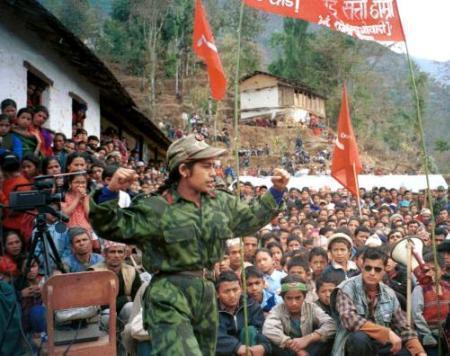
A Maoist rebel speaks to villagers around the area of Piskar, Nepal, during the civil war.
The Peoples Liberation Army (PLA) military wing of the Communist Party of Nepal (Maoist) (CPN(M))
318 notes
·
View notes
Text
Also preserved on our archive! (Follow the link to read this whole story and over 1,000 other news and opinion articles about covid!)
by Katherine Poinsatte, PhD
Case report 'emphasizes' possible COVID-19 link to autoimmune conditions
A 26-year-old man in Nepal developed pulmonary sarcoidosis after a mild COVID-19 infection, per a new case report that suggests “sarcoidosis as a potential complication of COVID-19,” according to researchers.
The man was initially diagnosed with post-COVID fibrosis, or thickening and scarring of lung tissue following a COVID-19 infection. However, after not improving for three months, clinicians performed additional tests and confirmed his lingering symptoms — including shortness of breath, repeated fevers, and weight loss — were due to sarcoidosis.
“This case report emphasizes the potential link between COVID-19 and autoimmune conditions like sarcoidosis, highlighting the need for a comprehensive diagnostic approach and long-term observation to distinguish between sarcoidosis and post-COVID fibrosis,” the researchers wrote.
The report, titled “Sarcoidosis in a young adult: A rare sequelae of COVID-19 infection,” was published in Clinical Case Reports.
Symptoms of COVID-19 infection continued despite treatment An autoimmune disease, sarcoidosis is characterized by an overactive immune system that causes granulomas, or small clumps of inflammatory cells, to form on different tissues and organs.
Sarcoidosis can be triggered by viral, bacterial, and fungal infections. During an infection, the immune system sometimes forms granulomas to surround the threat to the body so the clump of immune cells can destroy it later. In most people, these granulomas naturally go away once the infection is gone. However, when they are long-term, they can cause serious, permanent damage to organs.
In about 90% of cases, patients exhibit some level of pulmonary sarcoidosis, marked by the formation of granulomas on the lungs. These granulomas negatively impact lung function, causing symptoms like shortness of breath, coughing, chest pains, and wheezing. Granulomas can also lead to long-term lung scarring, also known as fibrosis, in which the lung tissue becomes stiff and thick, making it difficult for patients to breathe and reducing the amount of air the lungs can hold.
Infections with COVID-19, caused by the SARS-CoV-2 coronavirus that spread worldwide, can lead to many upper respiratory symptoms, including coughing and shortness of breath. In about 7% of cases, COVID-19 patients will also develop lung fibrosis.
Now, a team led by a researcher at the Nepalese Army Institute of Health Sciences College of Medicine described the case of a young man who had a five-day infection with COVID-19, exhibiting mild symptoms like coughing, fever, sore throat, and muscle soreness.
The man’s fever and cough did not go away, and one month after his initial COVID-19 infection he returned to the clinic. At that time, he tested negative for COVID-19, but his chest X-ray showed signs of lung inflammation and scarring.
He was preliminarily diagnosed with post-COVID fibrosis and prescribed a corticosteroid and a bronchodilator to help reduce inflammation and relax the muscles in the airways.
Further research needed to better understand disease links Despite treatment with those medications, however, the man’s symptoms lingered, leading him to seek medical care again three months after the initial COVID-19 infection. He reported symptoms like low-grade fevers, coughing, shortness of breath with physical activity, and weight loss.
Doctors did additional imaging of the man’s lungs, revealing multiple abnormalities. These included larger than normal lymph nodes, clumps of immune cells, and thickening of the connective tissue around the lung’s blood vessels and bronchi, the airways that lead from the windpipe to a lung.
After ruling out tuberculosis, the doctors analyzed biopsies obtained from the patient’s lymph nodes within the lungs, confirming the presence of granulomas. This led to a confirmed diagnosis of pulmonary sarcoidosis.
“Distinguishing between COVID-19 and sarcoidosis based on clinical and imaging features can be difficult due to significant overlap,” the researchers wrote. “Therefore, for symptomatic patients, obtaining a [biopsy-based] diagnosis of sarcoidosis is crucial to initiate early treatment.”
The patient’s previous treatment regimen was increased. When his cough worsened, the man was temporarily given the oral steroid prednisone until his cough went away. NADI'S NOTE: A recent large study of the effects of general steroids in long covid treatment showed no statistically significant results. Just goes to show you how far behind we are on finding effective treatment for covid and its lingering systems: They just keep cramming the same old chemicals down our throats and expecting different results. It's insanity. (little rant over lol)
At the time of the study’s publication, the patient did not have any sarcoidosis-related symptoms nor was taking any medications. He now has regular follow-up appointments every three months.
“This case report emphasizes that sarcoidosis like many autoimmune conditions arises due to immune system dysfunction following COVID-19 infection,” the researchers wrote.
Additional study is needed to learn more, per the researchers.
“Further research and extended follow-up are necessary to clarify these associations and understand the underlying mechanisms comprehensively,” the team concluded.
Study Link: onlinelibrary.wiley.com/doi/10.1002/ccr3.9445
#mask up#covid#pandemic#covid 19#wear a mask#public health#coronavirus#sars cov 2#still coviding#wear a respirator
11 notes
·
View notes